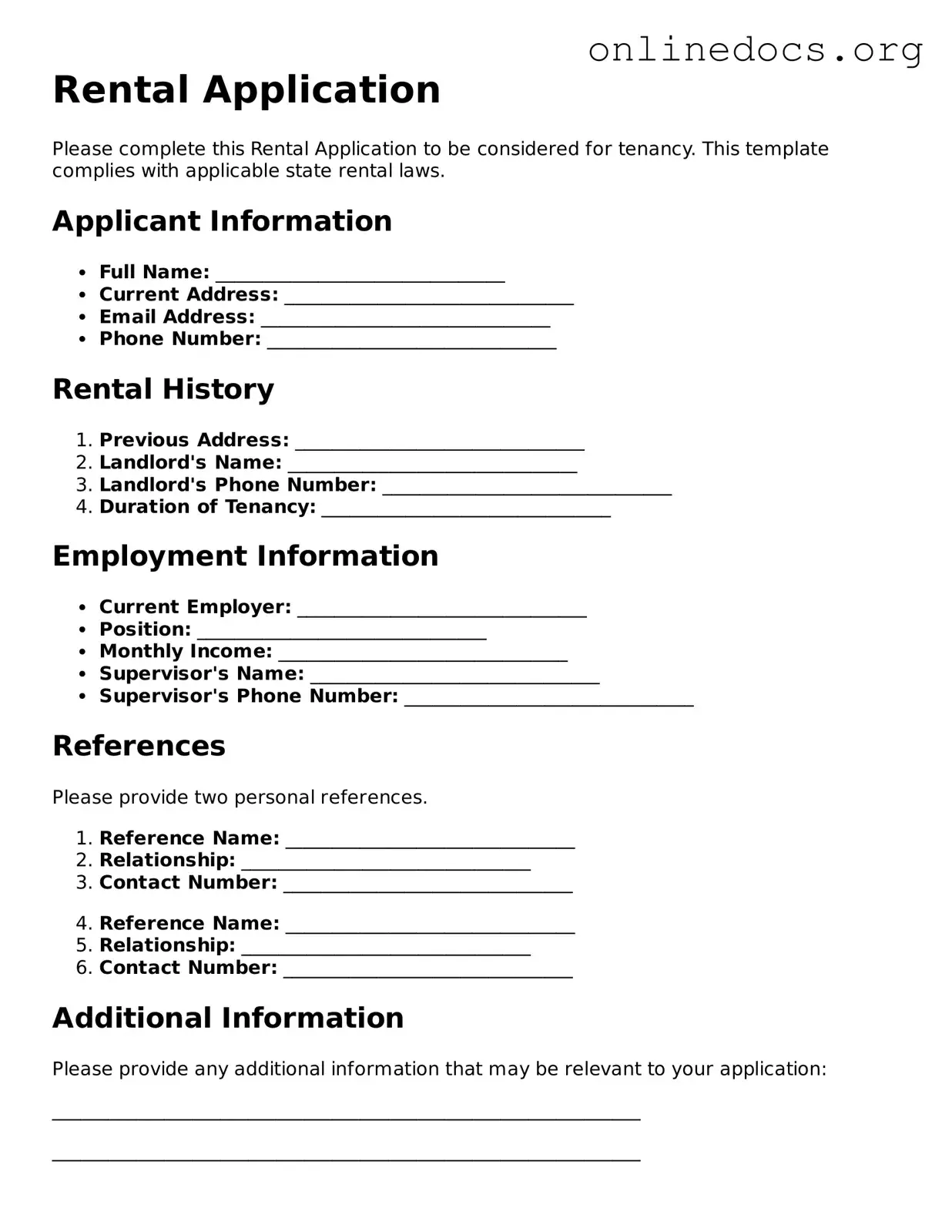The Rental Application form bears a resemblance to the Lease Agreement, as both documents serve to establish the terms and conditions under which a tenant may occupy a rental property. While the Rental Application focuses on gathering information about the prospective tenant, the Lease Agreement formalizes the rental arrangement once a tenant is approved. Both documents require personal details, such as identification and employment information, ensuring that the landlord has a clear understanding of who is renting the property.
Another document similar to the Rental Application is the Tenant Screening Report. This report is often generated after a Rental Application is submitted and contains background checks, credit history, and rental history. Both documents aim to assess the suitability of a tenant. The Rental Application provides the initial information, while the Tenant Screening Report offers a more in-depth analysis, helping landlords make informed decisions.
The Rental Agreement is also closely related to the Rental Application. While the Rental Application is an initial step in the leasing process, the Rental Agreement finalizes the relationship between the landlord and tenant. Both documents outline the responsibilities of each party, but the Rental Agreement includes specific terms such as rent amount, duration of tenancy, and rules regarding property use, whereas the Rental Application primarily collects tenant information.
In addition, the Guarantor Agreement shares similarities with the Rental Application. This document is often required when a tenant has insufficient credit history or income. Like the Rental Application, it collects personal information about the guarantor, who agrees to take responsibility for the lease if the tenant fails to meet their obligations. Both documents serve to protect the landlord’s interests and ensure that there is a reliable party backing the lease.
The Background Check Authorization form is another document that aligns with the Rental Application. This form is used to obtain permission from the applicant to conduct background checks, which may include criminal history and credit reports. Both documents are essential in evaluating a potential tenant's reliability and suitability for renting a property, thereby safeguarding the landlord's investment.
The Employment Verification form also shares similarities with the Rental Application. This document is often requested by landlords to confirm the tenant’s employment status and income level. While the Rental Application includes employment information, the Employment Verification form provides a more formal confirmation, ensuring that the tenant can meet their rental payment obligations consistently.
The Move-In Checklist is another document that relates to the Rental Application. Although it is typically completed after the application process, it serves to document the condition of the property at the time of move-in. Both documents are vital in protecting the interests of the landlord by ensuring that any existing damages are noted before the tenant takes possession, thus preventing disputes later on.
When considering the management of your legal affairs, the importance of a comprehensive Power of Attorney document cannot be overstated. This form empowers a designated individual to make decisions on your behalf, ensuring that your interests are protected even when you are unable to act personally.
Finally, the Rental History Verification form is similar to the Rental Application in that it seeks to gather information about a tenant's past rental experiences. This form is often sent to previous landlords to confirm the applicant's rental history, including payment punctuality and property care. Both documents are crucial for landlords to assess a tenant's reliability and likelihood of fulfilling their lease obligations.
